I won a puch 175, on everyone’s favourite auction site. In reality I only wanted bits for my 250, but instead got a whole 175. It was purchased unseen, so I wasnt really sure what I was getting. The seller had confirmed there were no documents and the engine was seized, but at the price I paid for it no-one could complain. It was a bargain, but that’s the problem/joy with auctions – and I’ve seen both sides.
Upon collection, it turned out the bike was indeed a Puch 175, but the SVS – the one with two carburettors. Whether that’s a good thing, sure, more peformance! However, I’m not sure – the owners manual warns of excessive throttle opening to avoid flooding the engine with the second, larger carb. This carb is only for additional performance at higher speeds, from what i understand. Should be fun getting it set up. The 175 has a split single engine, very similar to my Iso. However it benefits from proper battery ignition, and rear brake/gear levers that are on the correct side.
The bike, I’m told, was a barn find. Various bits had already been removed from the bike, however fortunately the rare bits were all in a box. There were even new bits, such as badges and a seat cover. However these are all bits that, whilst very useful, only come into play once the bike is complete.
The condition of the bike was generally better than it looked in the photos, but there was extensive rust on the wheel rims and spokes. There was surface rust all over, yet adds a lot to the bike, and the intention is to just lacquer it (I think they call it patina). I dont like the shade of blue when it’s freshly painted, whereas this paint looks great.
Build diary
July 2022
On the way home from collecting the bike, I thought of a to-do list
- Get the bike registered – there was no V5
- Unseize the engine, and attempt to rebuild with minimal new parts
- Prevent the rust from worsening
- Sort carbs, ignition, electrics and get the bike to run. Source exhaust downpipes (rotted out)
- Recover seat
- Rebuild wheels
Quite a short list, but each one has it’s potential nightmares, albeit each one getting easier as you go down the list.
At the time, I was still working on my MZ sport, as well as working silly long hours in my actual job. So it was a case of making sure the bike is ready for winter in the shed, so preventing rust was the main priority. Upon collection, the tank and engine were already off the bike, so the tank was flushed out and filled with oil. There was minimal rust in the tank, so a quick rinse and a fuel filter is all it will get.
The rolling chassis was put outside. I wasnt too concerned about rust, as the summer was very dry. However I did remove the speedometer unit, as it’s not only valuable, but also easily cracked and I didnt want it to fill with water.
The engine was seemingly full of water in the crankcase. So I was keen to get the barrel off and flush it out, in case I might be able to save the crankshaft from any further damage. As told by the seller, the engine was seized. The kickstart shaft would turn a degree or 2, so that wasnt stuck, but something else was.
The puch runs on quite tight piston tolerances, so it doesnt take much rust to get the pistons stuck
With enthusiasm still strong, I removed the cylinder head (8no. M7 bolts) to reveal the pistons, near TDC, with quite a lot of rust. That would explain the seizure!
So the barrel was filled with all sorts of oils, solvents and even at one point acid. The acid did a good job at removing the rust at the top, while the penetrating oil did nothing seemingly.
With all of these potentially damaging liquids being poured in the barrel, I removed the dynamo. This was just a case of removing the stator bolts, the flywheel bolt and the flywheel (worringly) pulled off without the need for a puller.
August 2022
A few weeks passed while I waited for the oil to seep into the barrel. It didnt. And the engine was still very much seized
So I unbolted the base of the cylinder, to see if the crank was seized too. That was also seized, suggesting the water had been in the crankcase for a long while. Not suprising considering the age of the bike. No amount of penetrating oil would solve this.
I had 2 options really – either cut up the pistons, or force them out. I opted for the latter. Whilst cutting up the piston crowns would’ve guaranteed no excessive force is put on the barrel, it did mean there was zero chance of salvaging the pistons.
The barrels are cast iron throughout, and have a thin extension which looks like an extended liner. Looking at the spares available online, these are often cracked. So clearly these are very brittle, so hitting the pistons hard with hammers is a no-no. Being the 2-carb version, I really didnt want to scrap the barrel, though I had no option but to remove it to get the crank.
The pistons were forced down using the head bolts through some thick steel plate, pressing down on spacers. Initially this worked well, with each bolt being tightened in a diagonal sequence, upto about 10Nm. The pistons moved a fraction of a millimeter at a time. Once the piston rings had passed the inlet ports, the pistons became stuck, so the barrel was heated, which got things moving again.
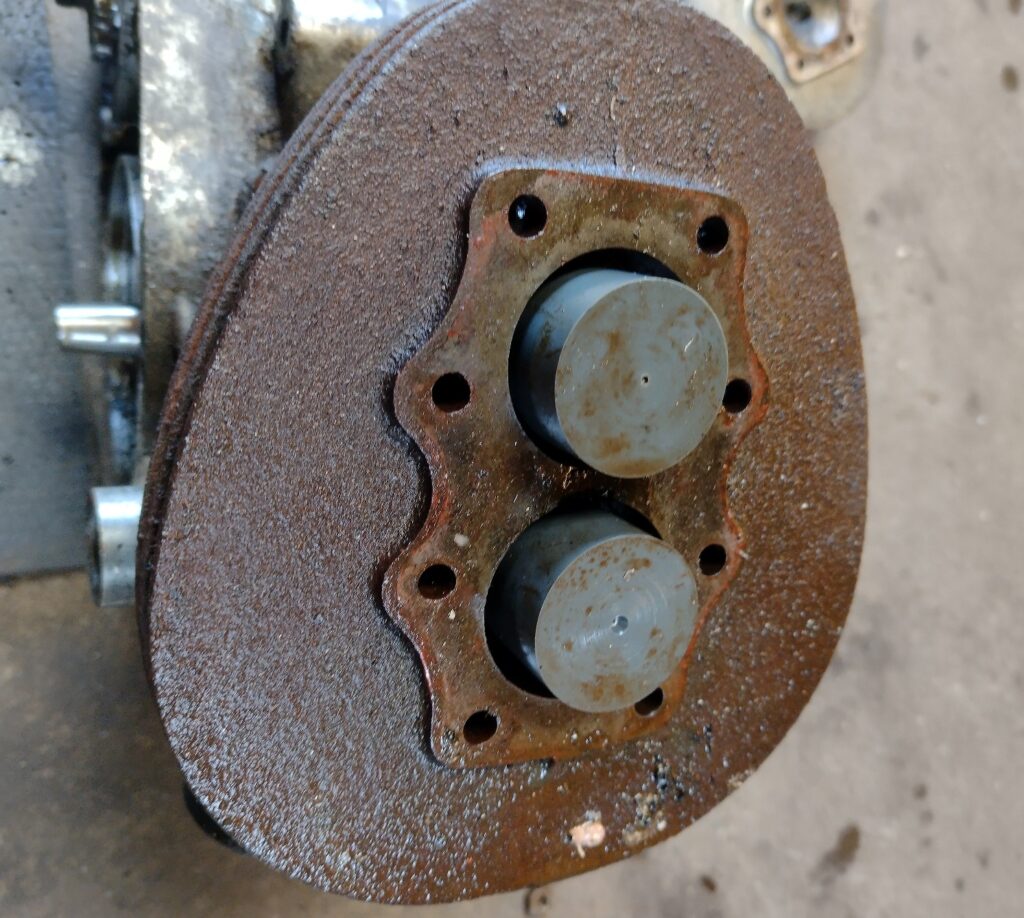
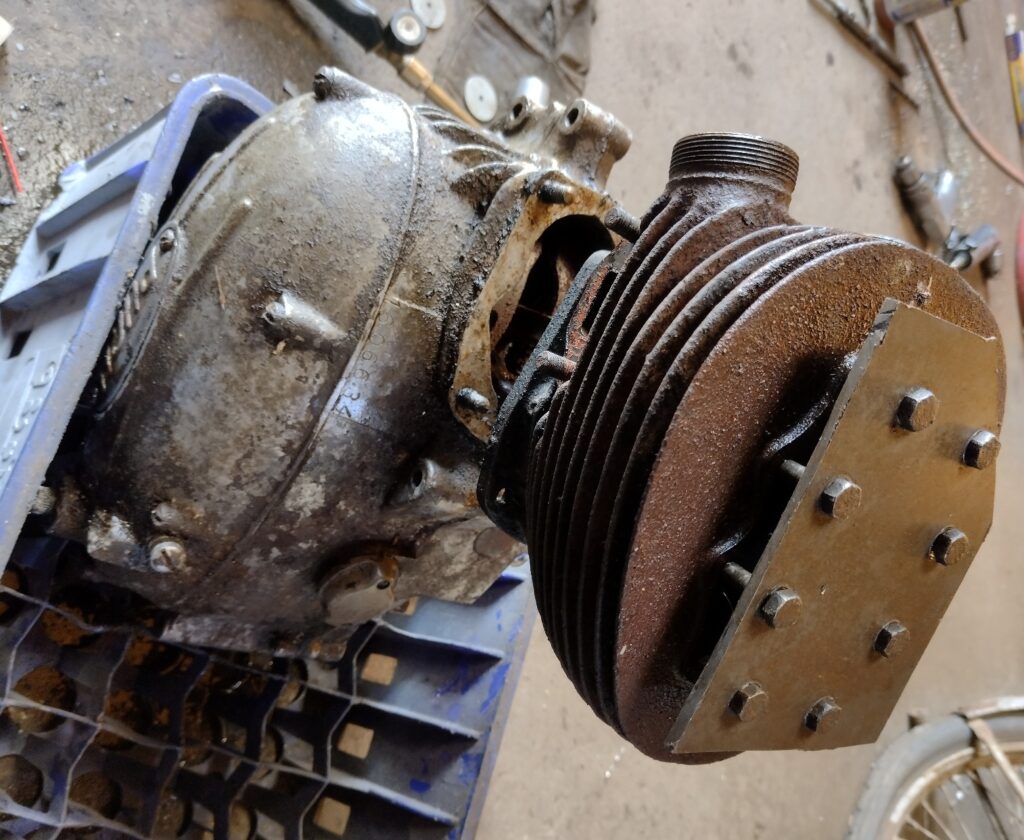
Clearly the crank was also seized, both at the mains, and the big ends.
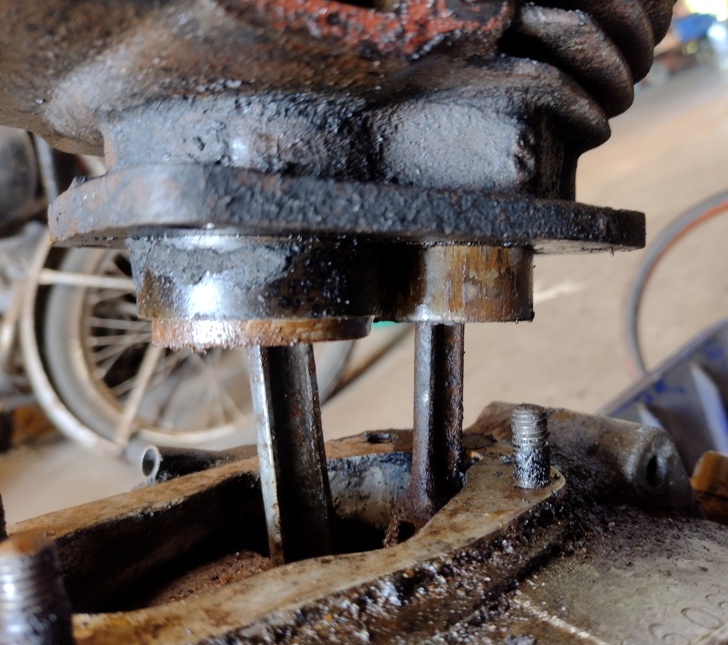
With the large amount of force, the nylon spacers were clearly not up to the job, and deformed.So steel spacers were used. Due to the short thread length in the head, it was important to use many spacers and packing peices. This ensured that the threads were no put under undue load, which could strip them, especially if the bolts were tightened with only a few threads inserted. This did mean that, for every few miliimeters of movement, all 8 bolts needed removing and new spacers added. The end result was a lot of time, and a lot of spacers!
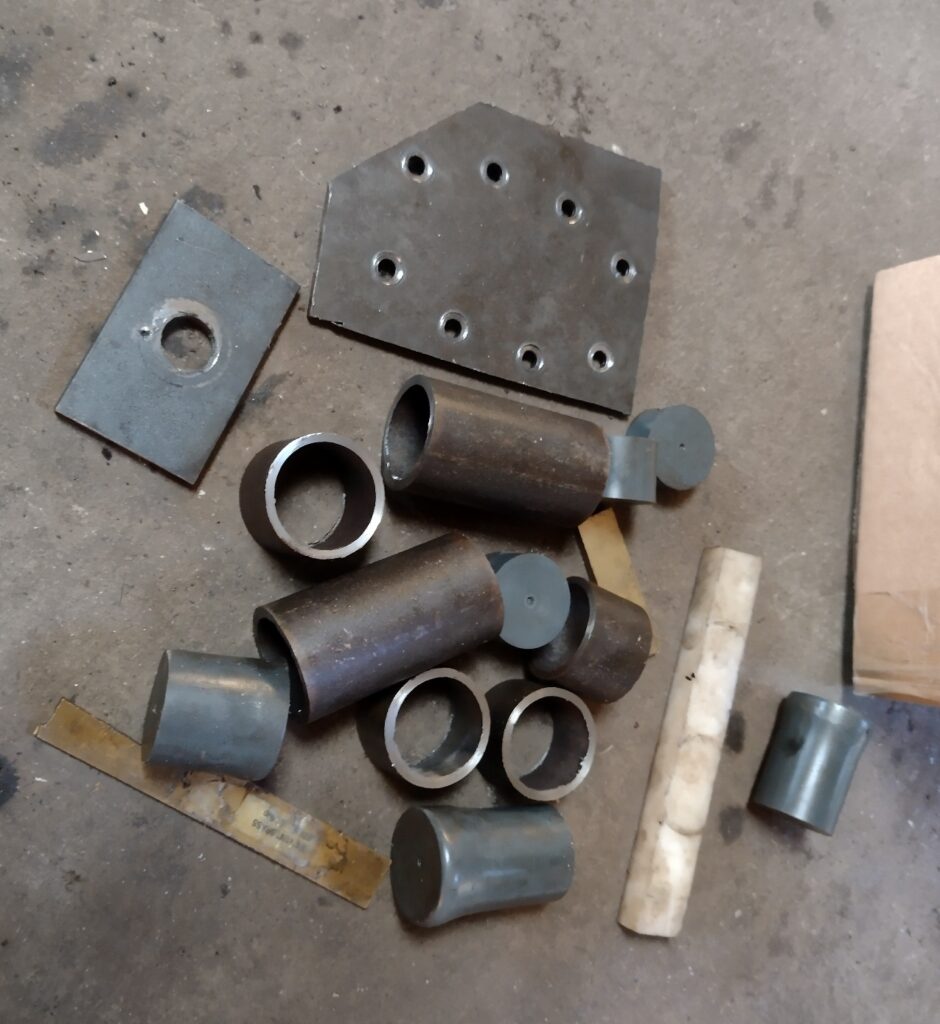
It took all day, but the pistons were out, and more importantly, the barrel was salvaged, seeminly undamaged.
Late August 2022
Summer was fairly dry, so the puch (minus engine / tank) remained outside throughout July / August, however it did get rained on occasionally. With winter on its way I was concious that I didnt want the rust to worsen, so after a dry spell I pulled the bike back out of storage and let it sit in the sun to dry thoroughly. There were a few minor tasks which needed sorting.
The handlebars are clamped onto the top fork yoke, however two of the bolts were bent, one was missing, and one was sheared. This meant the handlebars were loose, and wheeling the bike was challenging. Whilst the bike was out in the open, I decided to rectify this. The fork top nuts were removed easily, as was the stem nut. With the top yoke removed, I was fortunately able to easily re-tap the threaded holes, with an M7x1.0 tap. The stud removed easily with molegrips.
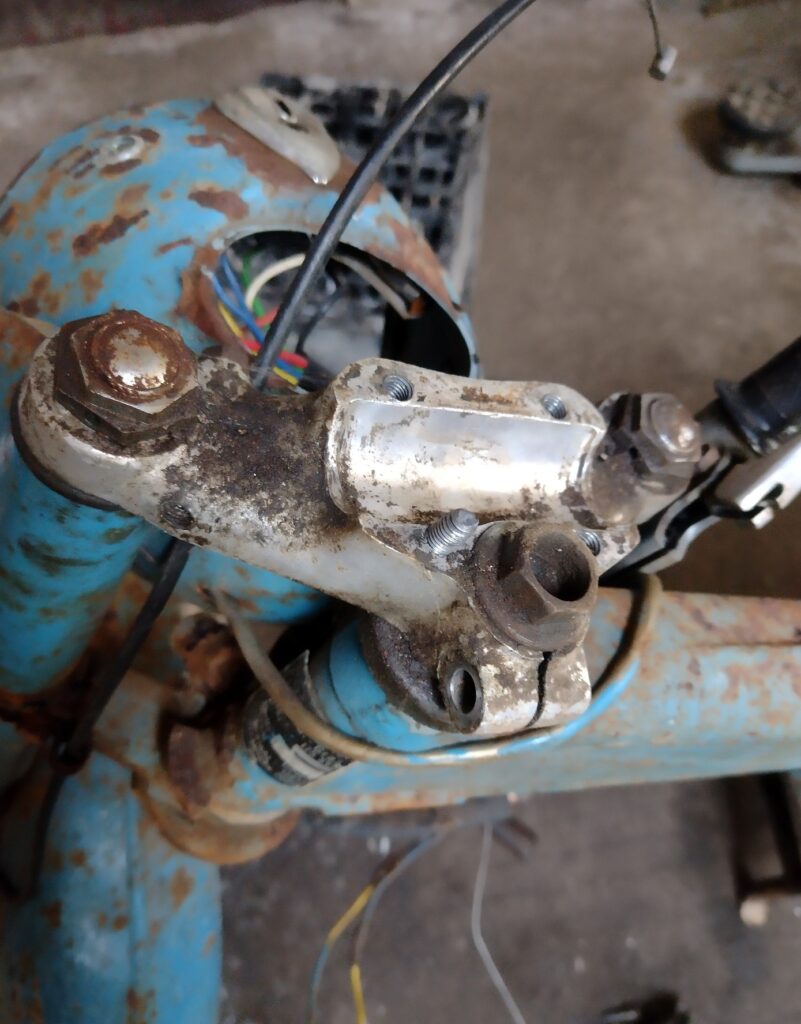
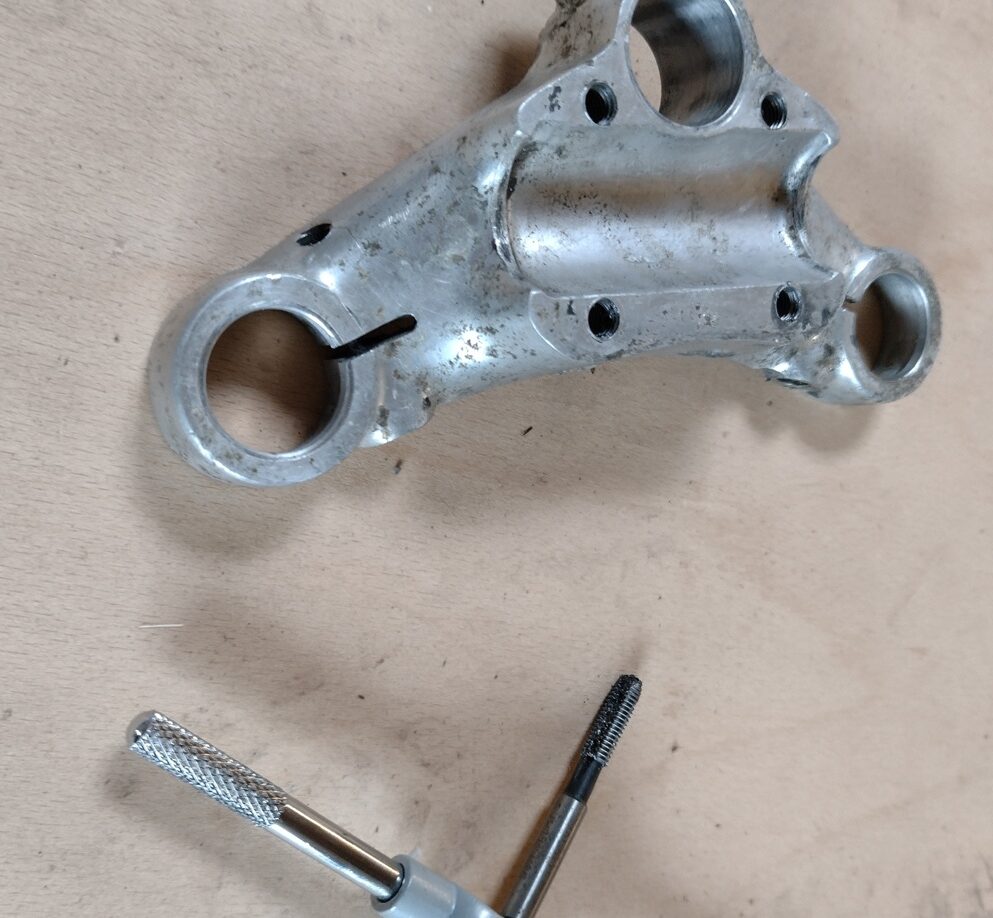
I could’ve done that with the yoke in situ, and I wish I had, when the ball bearings from the steering bearings fell out. These were refitted, but it all needs attention once the bike is registered. But for the time being, it meant I could fit new bolts and clamp up the handlebars properly.
There were several layers of mud on the base of the frame and in the engine mount subframe. This was all scraped out, and cleaned with a rotary wire brush,before being sprayed with lots of Waxoyl to prevent further rust, whilst I decide what to do in this area.
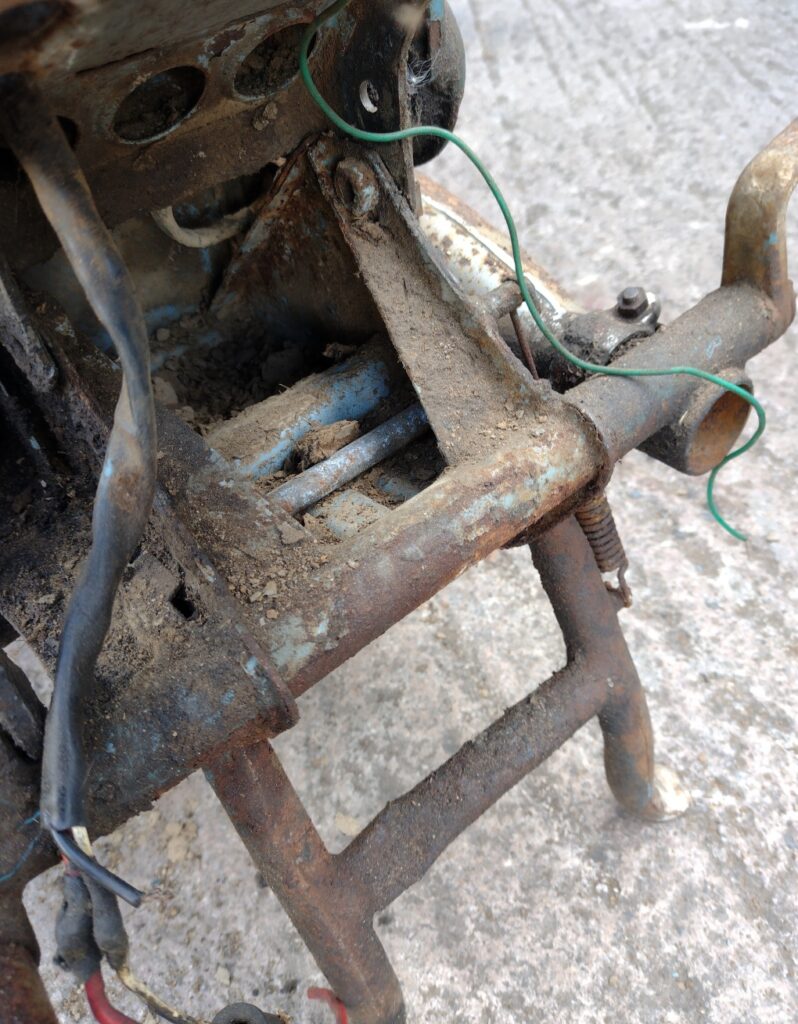
The rest of the rolling chassis was painted with ACF-50 to try and prevent any further corrosion, however I feel the wheel rims are too far gone. In fact on inflating the tyres, rusty water came out of the rims, so they are probably just as bad inside as they are on the outside! Fortunately MZ rims will fit, I think, and spokes are cheap
The bike went back outside, under an old car cover. I then put the whole thing in a bag (designed for mattresses, with a gauge of 500gsm and at 6ft long, it’s just about big enough), along with a packet of silica gel, and tied the bag up with a cable tie. Hopefully this will keep the moisture out. I consider the rolling chassis to now be in medium-term storage whilst I sort the engine.